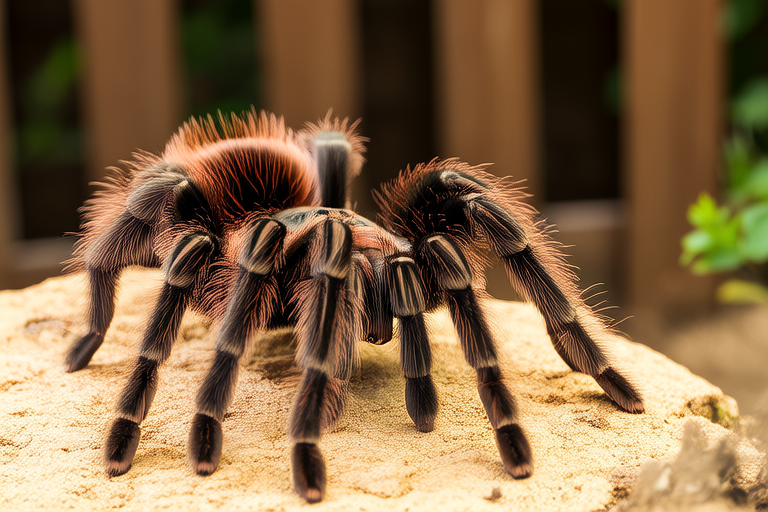Top 10 Myths Debunked About Living with a Tarantula
Tarantulas have long been misunderstood creatures, often seen as terrifying and aggressive spiders. However, these large arachnids can make fascinating and relatively low-maintenance pets for those who appreciate unique animals. With over 900 species worldwide, tarantulas come in various sizes, colors, and temperaments, making them intriguing subjects for enthusiasts. From the fuzzy pink zebra tarantula to the large, burrowing Mexican red-knee, there’s a tarantula for every type of keeper.
Myth 1: Tarantulas Are Aggressive and Dangerous
Myth: Tarantulas are aggressive and will attack humans without provocation.
Facts: Most tarantulas are quite docile and only bite when they feel threatened or provoked. They are more likely to flee than fight. Their venom is usually mild, comparable to a bee sting. Personal experience shows that handling tarantulas with care and respect can lead to positive interactions.
Myth 2: Tarantulas Will Always Bite
Myth: If you handle a tarantula, it will always bite.
Facts: Tarantulas rarely bite when handled properly. They are sensitive to vibrations and may retreat or flick urticating hairs if startled. Proper handling techniques include gentle, slow movements and minimal handling to avoid stressing the spider.
Myth 3: Tarantulas Are Very Difficult to Care For
Myth: Keeping a tarantula requires extensive knowledge and resources.
Facts: While tarantulas do have specific care requirements, such as proper humidity, temperature, and diet, they are generally low-maintenance pets. Once set up correctly, they require minimal daily attention. Researching the specific needs of your chosen species ensures a healthy and happy pet.
Myth 4: Tarantulas Can Live Anywhere
Myth: Tarantulas can thrive in any environment.
Facts: Each tarantula species has its own optimal environmental conditions, including temperature and humidity levels. For example, desert species need dry environments, while tropical species prefer higher humidity. Providing the right habitat is crucial for the tarantula’s well-being.
Myth 5: Tarantulas Are Noisy Pets
Myth: Tarantulas produce loud noises that can disturb household peace.
Facts: Tarantulas are virtually silent. They do not produce any audible sounds. The misconception might stem from the rustling of substrate or the movement of prey, which are not produced by the tarantula itself.
Myth 6: Tarantulas Need Constant Feeding
Myth: Tarantulas must be fed daily.
Facts: Tarantulas have slow metabolisms and don’t need frequent feeding. Depending on the species, they may eat once a week or less. Overfeeding can lead to health issues, so it’s important to follow guidelines based on the specific species’ dietary needs.
Myth 7: Tarantulas Cannot Be Housed Together
Myth: Tarantulas should never be housed together.
Facts: While some species are territorial and shouldn’t be housed together, certain species can coexist peacefully. Researching compatibility and providing ample space can allow multiple tarantulas to share an enclosure safely.
Myth 8: Tarantulas Require Specialized Food
Myth: Tarantulas need special diets that are hard to find.
Facts: Most tarantulas feed on crickets, mealworms, and other easily obtainable insects. Some larger species may also consume small vertebrates like mice. Ensuring a varied diet is key, but finding food isn’t typically difficult.
Myth 9: Tarantulas Are Short-Lived Pets
Myth: Tarantulas have very short lifespans.
Facts: Many tarantula species can live for decades. Females, in particular, have longer lifespans, sometimes reaching 20 years or more. Proper care significantly impacts their longevity.
Myth 10: Tarantulas Are Dirty and Unhygienic
Myth: Tarantulas are dirty and can spread disease.
Facts: Tarantulas are clean animals and do not carry diseases harmful to humans. Regular cleaning of their enclosure and substrate helps maintain hygiene. Proper care includes regular substrate changes and occasional cage cleaning.
Advice for Potential Owners
Considering a tarantula as a pet is a big decision. Here are some tips for new owners:
- Research: Learn about the specific species you’re interested in, including its care requirements, temperament, and lifespan.
- Prepare: Set up an appropriate enclosure with the correct substrate, hiding spots, and environmental controls before bringing your tarantula home.
- Handle with Care: Always handle your tarantula gently and infrequently to avoid stress.
- Consult Experts: Join online forums or local clubs for additional advice and support.
- Be Responsible: Commit to the long-term care and welfare of your tarantula.
Living with a tarantula can be a rewarding experience, offering a unique connection to nature and a fascinating companion. By dispelling common myths and following best practices, you can provide a safe and comfortable home for your eight-legged friend.
